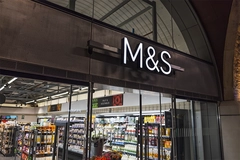
- Industry news
Industry news
- Category news
Category news
- Reports
- Key trends
- Multimedia
- Journal
- Events
- Suppliers
- Home
- Industry news
Industry news
- Category news
Category news
- Reports
- Key trends
- Multimedia
- Events
- Suppliers
Color innovators navigate “perfect storm” of regulatory and technical challenges amid sustainability push
Evolving regulations, environmental concerns, and the continued demand for vibrant, eye-catching hues are reshaping the future of color innovation. As consumers become more health-conscious and eco-aware, the industry is turning to advanced techniques such as fermentation and biotechnology to develop natural pigments that align with sustainability demands.
Recent regulatory action such as the Red Dye No. 3 ban and the FDA’s efforts to phase out petroleum-based synthetic colors have drawn global attention and accelerated R&D toward safer, natural alternatives. Meanwhile, demand remains strong for color solutions that deliver on sustainability and enhanced sensory appeal.
Food Ingredients First speaks with GNT, dsm-firmenich, Oterra, Givaudan, and ADM to explore how they tackle the food color sector’s challenges of balancing consumer appeal with current sustainability and regulatory demands.

Color has become a “strategic tool” in the F&B space — driven by consumers “who shop with their eyes and scroll with their thumbs,” says Sandro Sato Tomita, global head of Colors at dsm-firmenich.
“In the age of TikTok and Instagram, visual appeal is a key purchase trigger, especially for younger audiences. If it’s not vibrant and shareable, it risks being overlooked.”
Dieuwertje Raaijmakers, marketing communications specialist at GNT Group, says that the appearance of color is the primary sales driver in some sectors, like beverages. Major brands are launching carbonated soft drinks in colors like blue and purple.
“The appearance is the main sales driver for these products, and it’s often used to play around with perceptions of the flavor.”
 Color acts as an emotional shortcut; if it looks fresh, it tastes fresh, says Tomita.
Color acts as an emotional shortcut; if it looks fresh, it tastes fresh, says Tomita.
Vibrant hues with a “feel good” edge
However, Tomita says it is “not just about looks,” since color communicates emotion and function.
“Around 29% of consumers say unexpected hues spark curiosity and encourage them to try new flavors and ingredients. Color acts as an emotional shortcut; consumers interpret it instinctively. If it looks off, it tastes off. If it looks fresh, it tastes fresh.”
“Natural colorants like spirulina, matcha, and carotenoids are also rising in popularity, delivering vibrant hues with a feel-good, functional edge. Ultimately, today’s color innovation goes beyond aesthetics. It’s about authenticity, emotion, and aligning with values that matter.”
Kelly Newsome, director, global product marketing, Colors & Savory Flavors at ADM, also says that color enhances experience and emotional appeal, with younger, social media-savvy consumers drawn to bold, standout products.
“Some 40% of North Americans and 37% of Europeans find experimental colors in food and drink appealing.”
Regulatory push for “color replacements”
Besides visual and sensory appeal, regulatory pressures push innovators to rethink formulations.
“The regulatory developments in the States have sparked a rapid acceleration in color replacement projects, both among US-based manufacturers and those who export to the US market,” Raaijmakers says.
 GNT’s patented tech stabilizes spirulina for blue sports, energy, and carbonated drinks, says Raaijmakers.GNT’s Exberry portfolio can replace synthetic dyes in the vast majority of F&B applications, she adds. The colors are made from non-GMO fruits, vegetables, and plants, meeting demand for natural products and preparing for stricter regulations.
GNT’s patented tech stabilizes spirulina for blue sports, energy, and carbonated drinks, says Raaijmakers.GNT’s Exberry portfolio can replace synthetic dyes in the vast majority of F&B applications, she adds. The colors are made from non-GMO fruits, vegetables, and plants, meeting demand for natural products and preparing for stricter regulations.
Givaudan is working with regulatory bodies to widen the palette of approved natural colors worldwide, says Catalina Ospina, technical marketing specialist at Givaudan Sense Colour.
“Our Everzure Galdieria was just added to the federal registry by the US FDA. It is created via fermentation followed by simple water extraction.” The color offers manufacturers a natural option that mirrors the vibrancy of synthetic food dye Blue 1 for beverages and confectionery applications.
Meanwhile, Tomita says dsm-firmenich is taking a “future-proof” approach to comply with strict regulations. It is investing in fermentation-based color production to formulate high-purity carotenoids or betalains in various shades.
“Compared to traditional extraction, fermentation significantly reduces the carbon footprint of color solutions and provides high traceability, thanks to short, transparent supply chains that keep us close to the source.”
The company’s portfolio features nature-inspired carotenoids approved under the US Code of Federal Regulations (Title 21, Part 73) — “colors exempt from certification and aligned with clean label trends.”
Meeting clean label demands
Clean label trends maintain a strong foothold, with more than one in three consumers willing to opt for new or novel ingredients for a more natural product, suggests Innova Market Insights’ data.
Innova Market Insights data indicates 9% growth for color ingredient use in F&B launches between April 2020 and March 2025 (Image credit:ADM).ADM is responding to this trend by offering stable color solutions derived from natural sources, supporting brands in innovative color creativity with clean label appeal, says Newsome.
“There is a growing demand for colors derived from natural sources, with 70% of consumers in North America and Europe stating it is important that their food and drink products do not contain artificial colors.”
Meanwhile, Oterra has developed a non-caramel, clean label apple juice-based brown color, Simply Brown, to replace traditional caramel hues, says Luc Ganivet, head of innovation at the company.
“Simply Brown non-caramel products are regulatory acceptable globally and have clear and clean labeling, such as Apple concentrate (EU) and Fruit juice (color) (US).” The colors can be used in bakery and cereals, beverages, confectionery, dairy, and pet food.
Overcoming natural color limitations
As evolving US legislation opens up new opportunities for natural colors, time remains a key challenge for manufacturers, notes Ganivet. For example, ingredients like red sweet potatoes have a nine-month cycle that delays color development.
Additionally, shade matching remains challenging due to processing, acidity, and heat or light sensitivity, he adds.
Meanwhile, Tomita considers maintaining color stability over a product’s shelf life, especially for sensitive natural pigments, a major technical hurdle. “Demanding environments like low-pH beverages, often exposed to light and oxygen, pose a ‘perfect storm’ for fading.”
 Poor dispersion in natural pigments may cause streaking, along with off-notes that require deodorization tech, says Newsome.“To overcome this, we’ve invested heavily in research, developing advanced techniques that can identify and precisely utilize the microcrystalline structures in beta-carotenes.”
Poor dispersion in natural pigments may cause streaking, along with off-notes that require deodorization tech, says Newsome.“To overcome this, we’ve invested heavily in research, developing advanced techniques that can identify and precisely utilize the microcrystalline structures in beta-carotenes.”
Another hurdle is achieving uniformity and proper dispersion, the lack of which can lead to “streaking, speckling or an uneven appearance,” Newsome flags.
“Preventing sensory impact is also crucial. Colors derived from natural sources may introduce undesirable off-notes or aromas. Solving for this challenge requires deodorization technology to ensure maximum color impact without off-notes.”
Ospina says Givaudan maintains color consistency with advanced pigment chemistry and manufacturing processes “allowing brands to deliver reliable products to consumers.”
Plant-based color momentum
Pioneering innovative natural color solutions can help formulators meet clean label demands and enhance product performance.
ADM’s Colors from Nature range includes heat-stable options like blue from huito fruit and the PearlEdge line, a natural white alternative to titanium dioxide (TiO2), says Newsome. TiO2 has been under regulatory scrutiny due to its adverse health impacts and spurred substitute innovations after the EU ban.
Meanwhile, dsm-firmenich’s Vibelly Color Solutions targets stable yellows, oranges, and reds, with low pH sensitivity, clean label alignment, and cost-effective use, says Tomita. Its Intense Orange carotenoids can be applied in beverages and gummies.
GNT’s Exberry Shade Vivid Orange, made from non-GMO paprika, supports clean-label demands, while “temperature and acid stabilized” spirulina expands its use in sports, energy, and carbonated drinks, notes Raaijmakers.
 Givaudan’s Everzure Galdieria offers a natural option that mirrors the vibrancy of synthetic Blue 1 (Image credit: Givaudan).
Givaudan’s Everzure Galdieria offers a natural option that mirrors the vibrancy of synthetic Blue 1 (Image credit: Givaudan).
Future direction
Looking ahead, Raaijmakers expects health and eco consciousness to influence the F&B industry significantly.
“The debate around ultra-processed food means consumers are paying much more attention to what they put in their bodies, and that’s only going to accelerate the shift toward more natural coloring solutions.”
While Newsome notes that the natural alternatives to synthetic dyes will rise, Ospina expects novel agri-tech solutions to fill “technical gaps in the natural color palette.”
For Tomita, “dual-function colorants” that enhance visual appeal and support on-pack health claims may emerge, leading to more prominent regulatory scrutiny.
“Brands will need to back up health-related messaging with robust scientific data, and regulators will prioritize consumer safety and confidence, particularly in the wake of high-profile actions like the US ban on Red Dye 3.”











